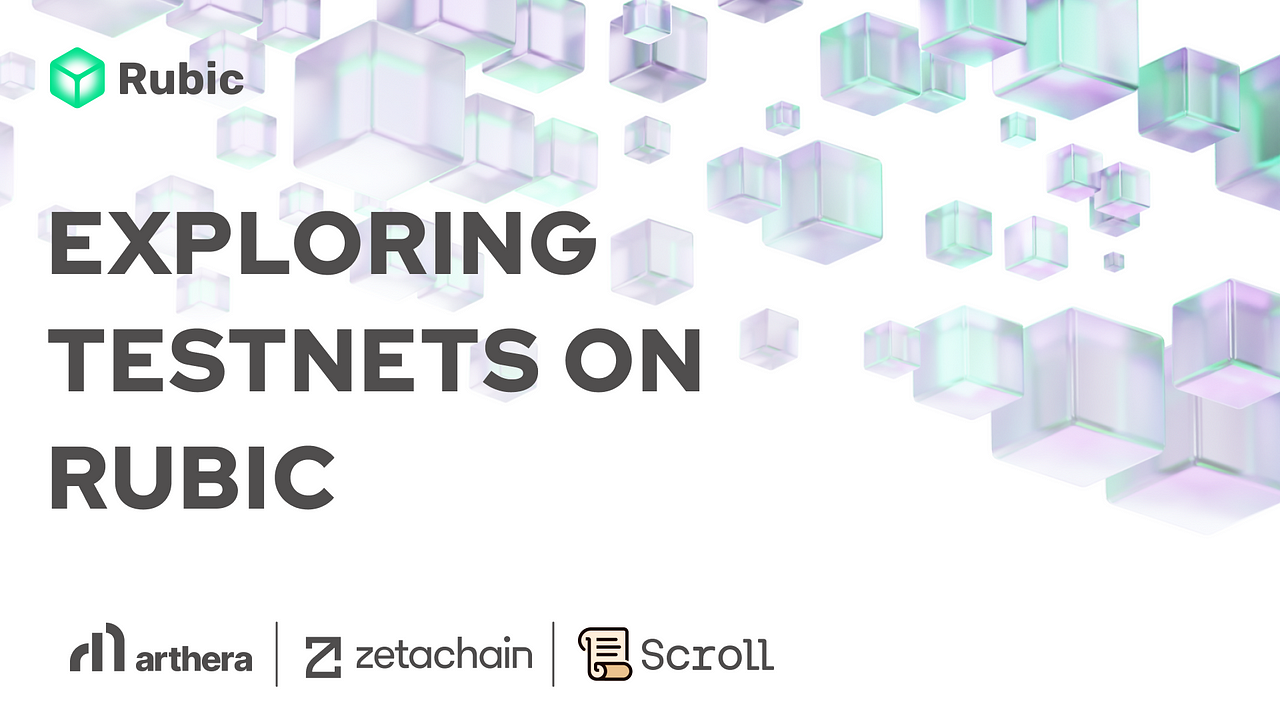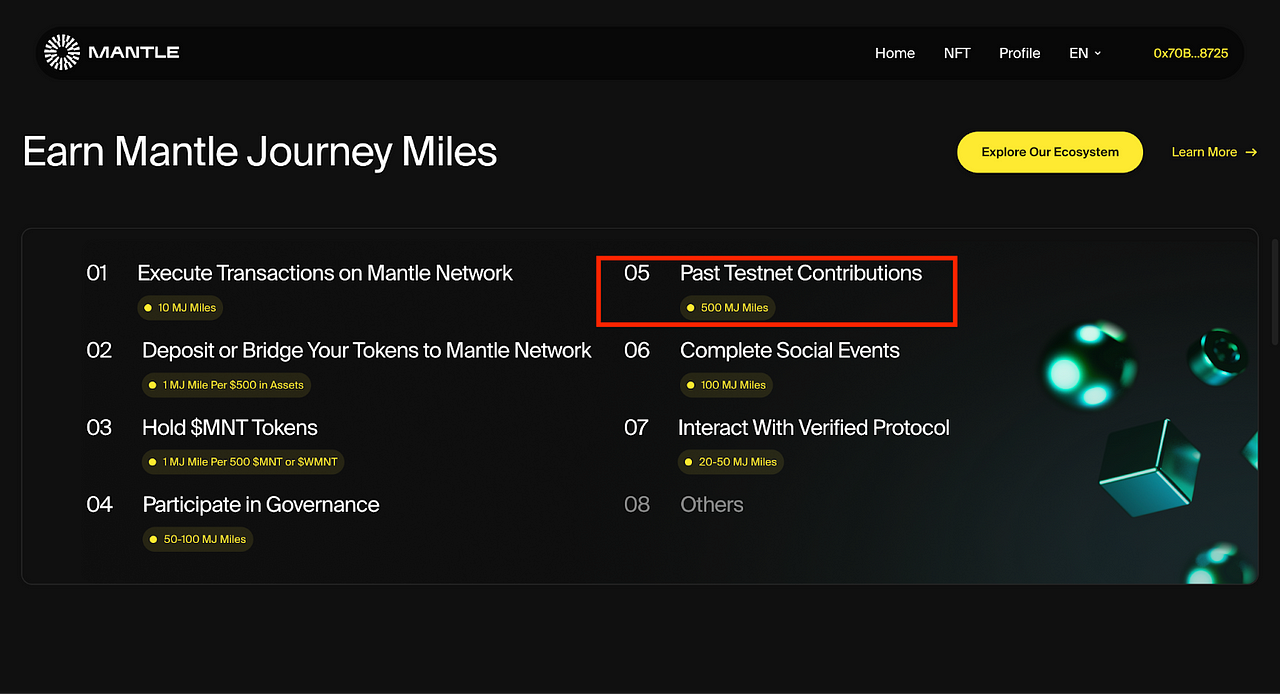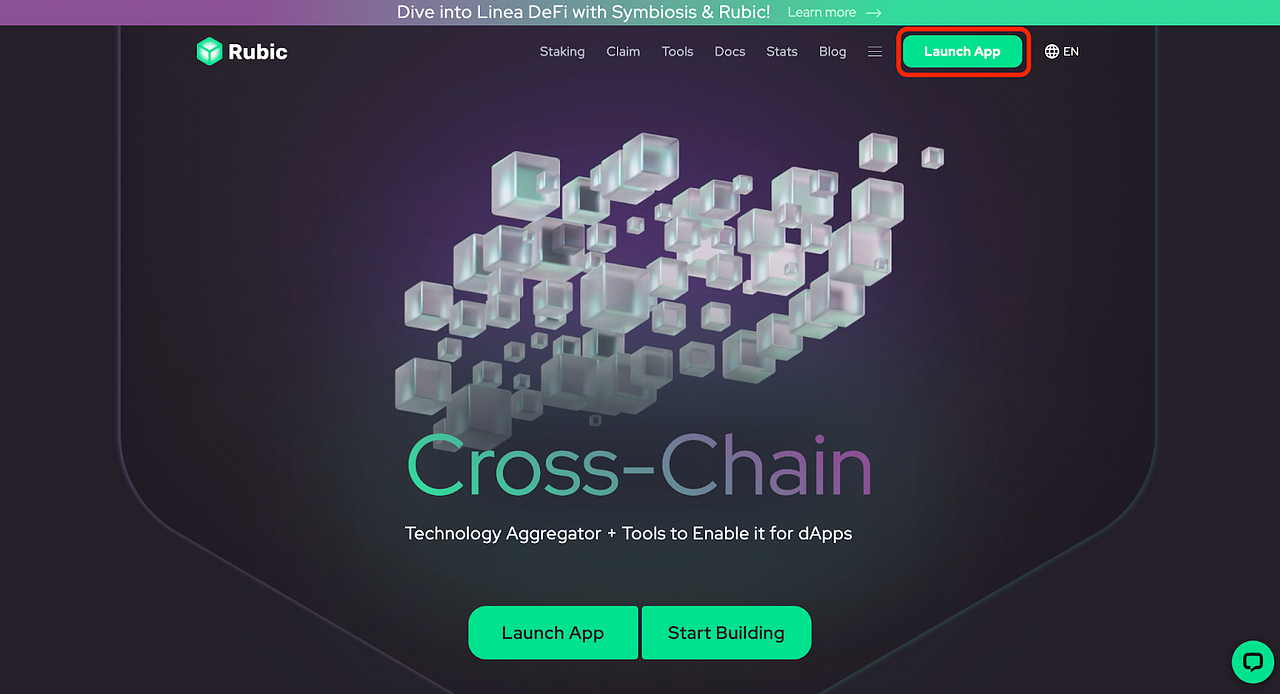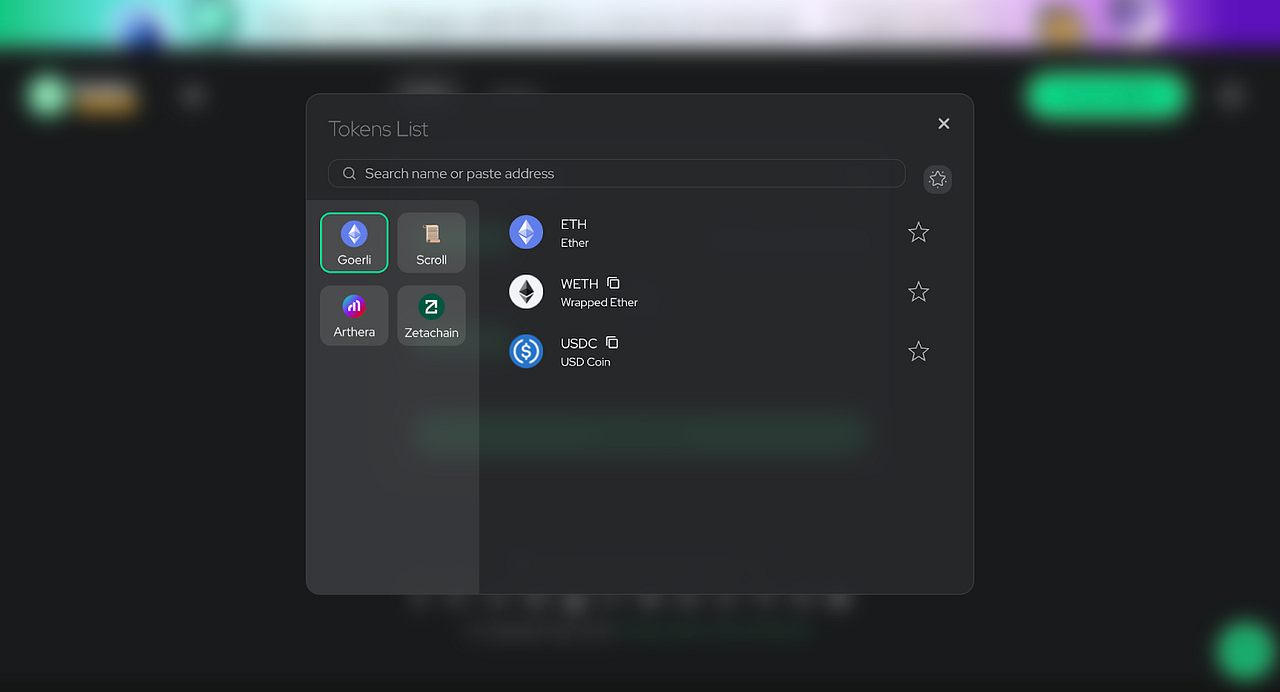What Are Testnets? A Comprehensive Guide (2025)
Blockchain technology has revolutionized the way we think about finance, applications, and digital assets. However, the journey to a secure and efficient blockchain ecosystem goes through trials and testing.

Testnets serve as the sandbox where developers experiment, fine-tune, and ensure the security of their creations before they hit the mainnet. Early testers usually get benefits from blockchains, and user interest towards them is growing.
In this article, we dive into Rubic.exchange’s commitment to providing an extensive range of testnets, opening up new opportunities for developers and users alike.
Testnets Explained
In the world of blockchain, testnets play a pivotal role. They are like digital laboratories where developers can test their projects without risking real assets. Testnets enable developers to:
- Experiment with new features and upgrades.
- Test the functionality of smart contracts.
- Identify and fix bugs and vulnerabilities.
- Collaborate and refine their projects in a safe environment.
What Are Testnets Used For?
One integral aspect of this technological revolution is the use of testnets, which not only serve as vital tools for developers, but also offer a range of benefits for crypto users.
1. Early Access to New Ecosystems:
- Testnets provide crypto users with early access to upcoming blockchain ecosystems. This means you can explore and engage with new technologies before they reach the mainstream.
- Being among the first to navigate these ecosystems gives you a competitive edge, and positions you as an early adopter.
2. Hands-on Learning:
- Testnets are ideal platforms for learning and gaining hands-on experience in the blockchain space without risking real assets.
- Users can experiment with various features, transaction processes, and interactions within the blockchain environment.
3. Potential for Airdrops and Rewards:
- A noteworthy trend in the blockchain world is the reward system for early users who actively participate in testnets. One example is the Mantle Journey initiative.
Mantle Journey aims to reward early adopters of the Mantle network, and one of the eligibility criteria is past testnet contributions. This means that interacting with test networks on Rubic can potentially unlock opportunities for airdrops and other rewards in new blockchain ecosystems.

Testnet vs Mainnet: Understanding the Differences
In the blockchain ecosystem, two primary environments play a crucial role in the development and testing of DApps and smart contracts: testnet and mainnet. These environments serve distinct purposes, each contributing to the overall functionality and security of blockchain networks.
Ethereum Testnets
Ethereum, one of the leading blockchain platforms, has several testnets, each serving as a simulated version of the Ethereum mainnet for developers to test their applications without using real assets. Some notable Ethereum testnets include:
- Ropsten
- Goerli
- Rinkeby
- Sepolia
Developers can deploy and interact with smart contracts on these testnets, mimicking the Ethereum mainnet environment but without using actual Ether or valuable assets.
Why Are Testnets Important?
Testnets serve several crucial purposes in the blockchain development ecosystem:
- Risk-Free Testing: Testnets provide a risk-free environment for developers to test the functionality of their smart contracts and DApps without the fear of losing real assets in case of errors or vulnerabilities.
- Community Feedback: Developers can deploy their projects on testnets to gather feedback from the community, enabling them to identify and address potential issues before launching on the mainnet.
- Protocol Upgrades: Testnets are used to test and validate proposed protocol upgrades or changes to the blockchain network, ensuring they function as intended before implementation on the mainnet.
For Developers and Stakeholders
For developers and stakeholders, testnets offer a controlled and secure environment to:
- Debug Code: Identify and rectify any bugs or issues in smart contracts or applications before deploying them on the mainnet.
- Ensure Security: Testnets help verify the security of smart contracts and DApps, ensuring they can withstand potential attacks or vulnerabilities.
- Optimize Performance: Developers can optimize the performance of their applications based on real-world testing scenarios, enhancing user experience on the mainnet.
For Crypto Users
For crypto users, the existence and successful testing on testnets mean:
- Enhanced Security: Users can trust that applications and smart contracts have undergone rigorous testing, reducing the likelihood of vulnerabilities or exploitation on the mainnet.
- Smooth User Experience: Testnets contribute to a smoother and more reliable user experience on the mainnet by allowing developers to fine-tune their applications based on real-world testing results.
The Future of Ethereum Testnets
As blockchain technology evolves, the future of Ethereum testnets involves ongoing improvements and innovations. Developers and the Ethereum community will continue to explore ways to enhance scalability, reduce transaction costs, and improve overall performance. The collaboration between developers and users on testnets will play a pivotal role in shaping the future of the Ethereum ecosystem, ensuring a robust and secure platform for decentralized applications.
Conclusion: Rubic’s Commitment to Testnet Integrations
At Rubic, we are committed to enhancing the interoperability across blockchains for users and developers. As testnets get more and more popular amongst users as a fruitful activity, it is important to offer this opportunity on Rubic, so that Rubic can grow together with new audiences the testnets can bring.
As of now, Rubic.exchange proudly hosts 5 testnets, each with its unique features and projects:
- Goerli Testnet: Designed for Ethereum-based projects, the Goerli Testnet faithfully replicates the Ethereum mainnet environment. It provides developers with a seamless and secure space to test their dApps and smart contracts, ensuring they function flawlessly before deployment.
- Scroll Testnet: Scroll Sepolia Testnet boasts seamless integration with Ethereum applications and tools, offering native compatibility that empowers developers and users alike.
- Arthera Testnet: Arthera’s blockchain is a DAG-based blockchain that is fully EVM-compatible. Its implementation started from Go-Ethereum, the Go implementation of the Ethereum protocol, but with a different consensus engine and operating model, aimed at high transaction volumes, fast confirmation times, and low gas fees.
- ZetaChain Testnet: An EVM-compatible L1 blockchain that connects everything. On ZetaChain you can build interoperable dApps that span any chain, including Bitcoin.
- Taiko: A decentralized, Ethereum-equivalent ZK-Rollup (Type 1 ZK-EVM). They’re working on the full Ethereum ZK-EVM circuits as part of a community effort led by the Ethereum Foundation’s Privacy and Scaling Explorations (PSE) team.
The journey doesn’t stop here. Rubic.exchange has ambitious plans for the future, with more testnet integrations in the pipeline. Some potential integrations include: Astar zkEVM, Obscuro, Concordium, Omni Network, Layer N, Intmax, Ancient, Flare Network, and etc. These additions will enable users and developers to explore new ecosystems and test their projects across various blockchain platforms.
Advantages of Using Rubic’s Testnet Feature
Rubic.exchange’s testnet feature provides several benefits:
- User-Friendly Interface: Easy access to testnets, even for those who are new to the blockchain.
- Robust Testing Environment: Developers can confidently test their projects, knowing they won’t affect real-world assets.
- Resourceful Tools: Rubic.exchange provides resources, such as links to faucets and explorers, to facilitate testing.
How to Access the Rubic Testnet App
Getting started with Rubic.exchange’s testnet feature is easy:
- Use the direct link: https://testnet.rubic.exchange/ or visit Rubic.exchange’s website and launch Rubic’s app.

- Navigate to the “Testnet” section.

- Select the desired testnet from the available options.

- Follow the provided instructions to get started.
We are currently strategizing the integration of additional test networks, such as Taiko and other testnets, with the goal of expanding our test chain offerings to a total of 19 in the near future.
By providing accessible and secure testing environments, Rubic.exchange empowers blockchain enthusiasts to bring their visions to life without unnecessary risk. As we look to the future, the integration of more testnets promises exciting opportunities for innovation and experimentation. Explore Rubic.exchange’s testnet feature today and be part of the blockchain revolution!
Visit Rubic.exchange and explore the available testnets. Developers, test your projects on Rubic.exchange’s testnet feature to ensure a smooth transition to the mainnet.
Rubic’s Test Network B2B Integration Services
While Rubic.exchange primarily offers a diverse range of testnets for crypto users and developers, it also extends its services to blockchain projects looking to integrate their test networks. If your network is on the brink of launching and you have an open grant program, a working bridge (especially if it is one of our cross-chain providers) or DEX on your test network, Rubic offers an exciting opportunity for collaboration.
1. Seamless Integration:
- Rubic’s integration services provide a seamless pathway for blockchain projects to introduce their test networks to a broader audience.
- Our experienced team ensures a smooth integration process, making it easier for your project to reach new users and testers.
2. Access to a Growing Community:
- By integrating your test network with Rubic.exchange, you gain access to our ever-growing community of crypto enthusiasts, developers, and users.
- This exposure can be instrumental in attracting new users and building a vibrant ecosystem around your blockchain project.
3. User Testing and Feedback:
- Rubic’s users can explore and test newly integrated testnets. This means that your project will benefit from a pool of dedicated crypto users providing valuable feedback.
- User feedback is essential for identifying and addressing any issues or improvements needed before a mainnet launch.
4. Mutual Promotion:
- Collaboration with Rubic.exchange also includes mutual promotion opportunities. We’ll feature your test network on our platform, making it easily accessible to our user base.
- Additionally, we can explore joint marketing efforts to enhance the visibility of your project within the crypto community.
5. Bridging Networks:
- If your blockchain project involves cross-chain functionality or requires bridge testing, Rubic’s integration services are a valuable resource.
- We specialize in integrating and testing bridge solutions, ensuring they function flawlessly and securely.
6. Supporting Partnerships:
- At Rubic, we are committed to fostering collaboration within the blockchain space. We can introduce you to the vast network of our partners, and pave the way for growth.
To sum up, Rubic’s Test Network Integration Services offer blockchain projects a unique opportunity to showcase their test networks to a broader audience, attract potential users and testers, and receive valuable feedback. Our collaborative approach not only benefits your project, but also contributes to the overall advancement of blockchain technology. Together, we can drive blockchain innovation forward.
Navigating Testnets: FAQs:
- H3: How many Ethereum testnets are there?
- H3: Which testnet should I use?
- H3: Are testnet tokens real?
- H3: Why should I use Rubic’s testnet features?
- H3: How do I access Rubic’s testnet app?
Contacts:
Sven Michael, CBDO:
E-mail: [email protected]
Ilya Storchilov, Business Developer:
E-mail: [email protected]
Discord: ilia_sib
About Rubic
Rubic aggregates 70+ blockchains and testnets, while it enables swaps of 15,500+ assets with the best rates, highest liquidity, and transaction speeds — in one click, thanks to the integration of 220+ DEXs and bridges.
Users no longer have to roam across Web3 to compare rates and liquidity; they can make cross-chain and on-chain swaps of any available token to any other one on https://app.rubic.exchange/. On top of that, Rubic’s app along with our cross-chain widget provide fiat on-ramp services, making crypto easy to access and buy.
We also provide tools for dApps to enable cross-chain swaps. Rubic’s functionality can be implemented by any crypto project willing to become interoperable, with an easy-to-install widget and fully customizable SDK.

